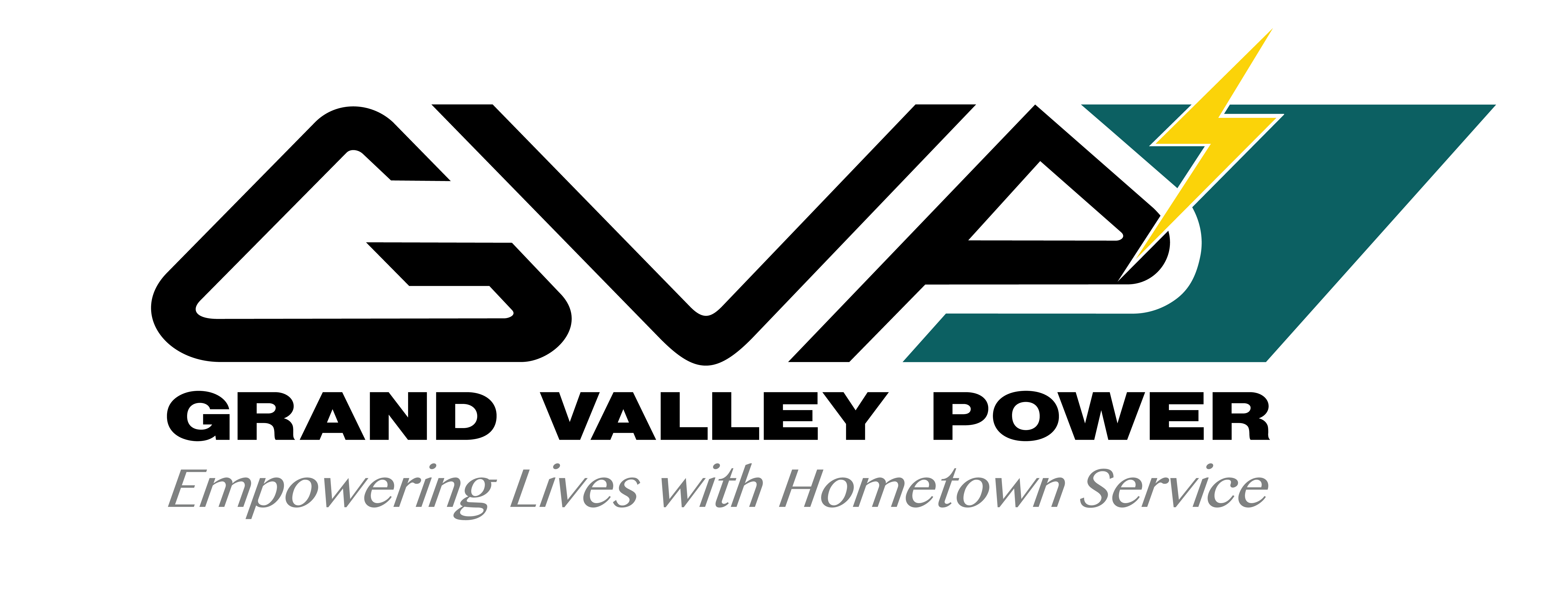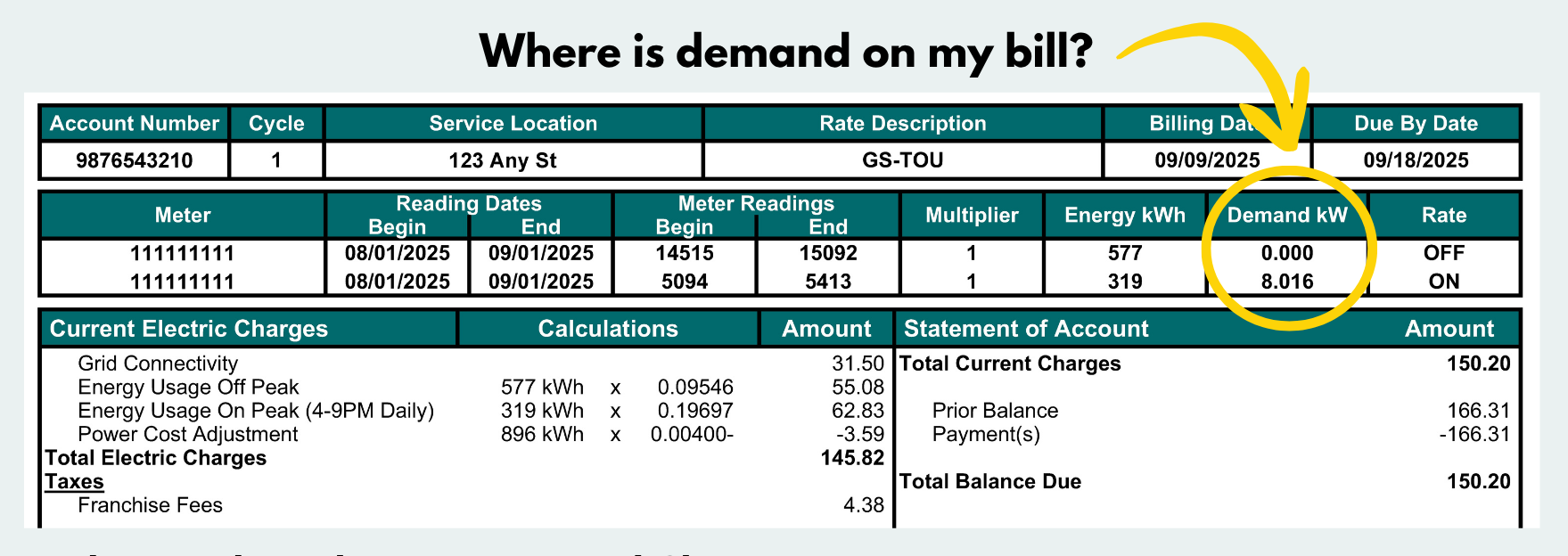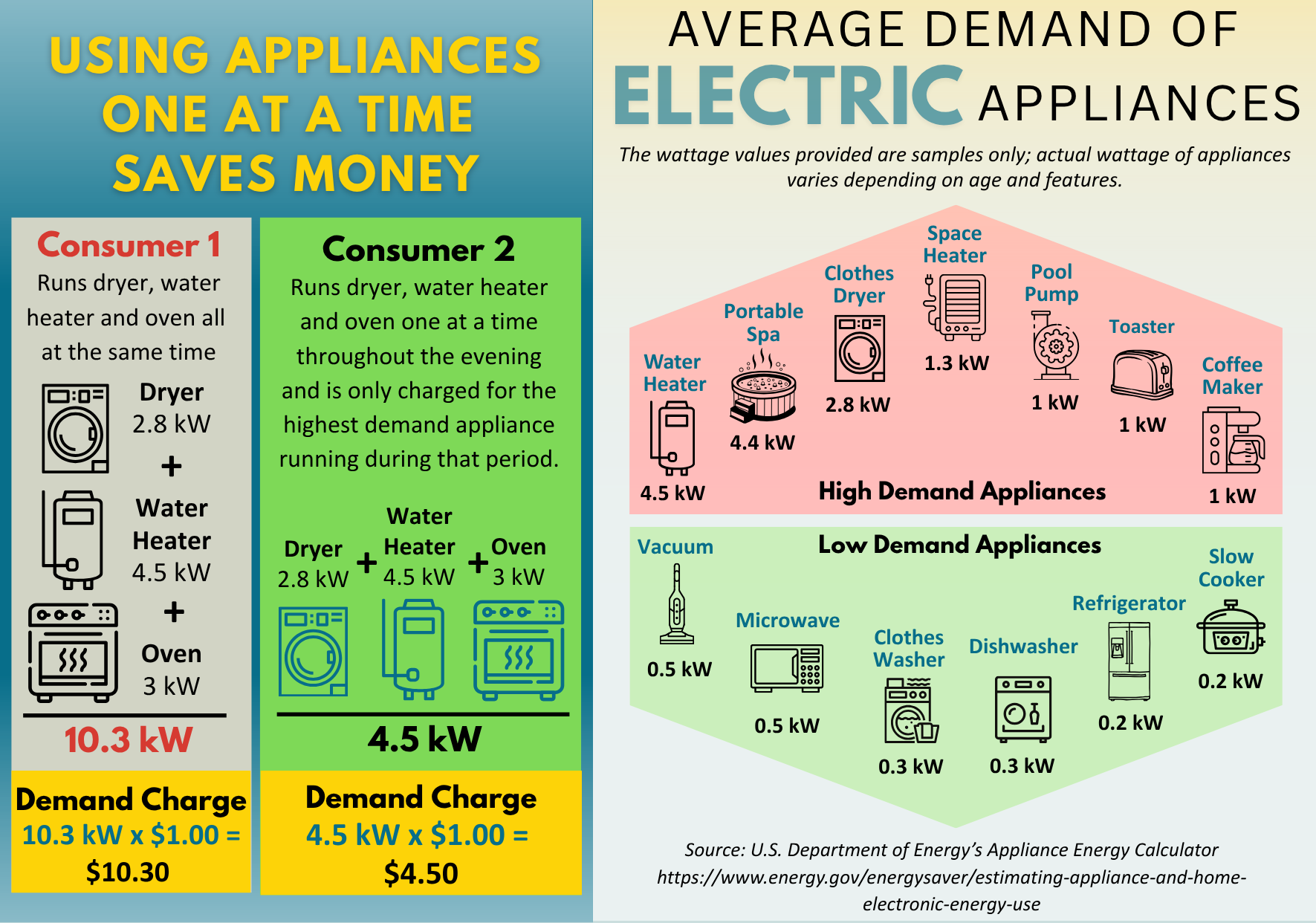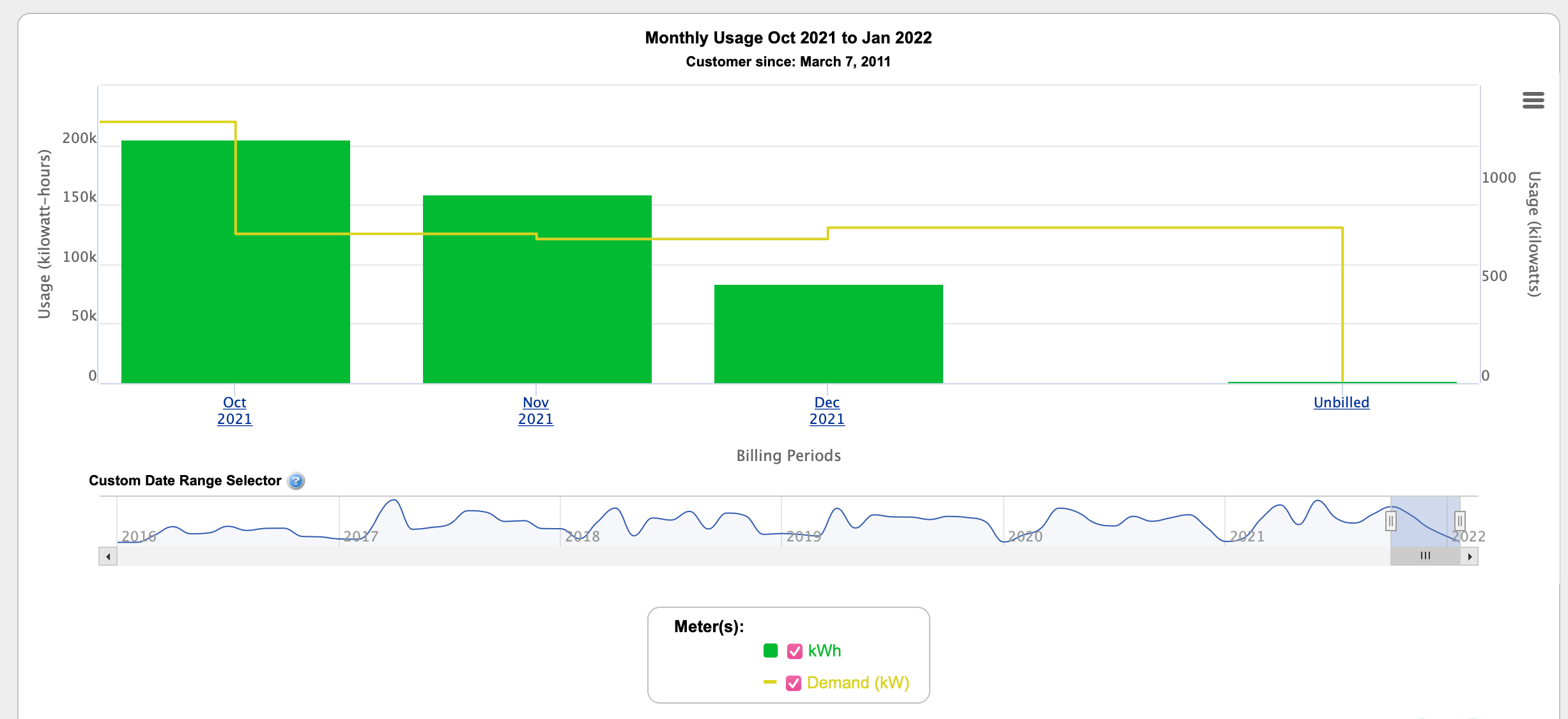All general service, commercial small power, and large and industrial power rate classes are billed under a three-part (demand) rate comprising a Grid Connectivity charge, Energy Charge, and Demand Charge component.
What is demand?
Demand refers to the maximum amount of electrical power that is consumed at one time in a billing period. This is different from energy, which is the amount of power used over a period of time.
The Demand Charge line item that appears on your monthly bill represents the highest amount of electricity used – measured in kilowatts (kW) – at one time during that billing month.
The Demand charge is designed to help pay for some of the co-op’s distribution demand costs. What are these costs? They are costs incurred in building out our distribution system so that it can reliably provide all of the power our members need when their need for power is the greatest. The biggest cost drivers are substations, distribution lines, and transformers. In 2025 Grand Valley Power wrapped up a $2.2 million upgrade to our Highline Substation to meet growing member demand. Upgrades to various other distribution lines and substations will be required in the future. We need to have a way to pay for these improvements that is not tied to kilowatt hour sales. That’s why cooperatives like GVP include a Distribution Demand Charge as part of their rates.
If you're wondering about the "demand charge" line item on your electric bill, you're not alone. In this video, we use simple real-life examples of a small business and a large business and how you can control your energy demand.



